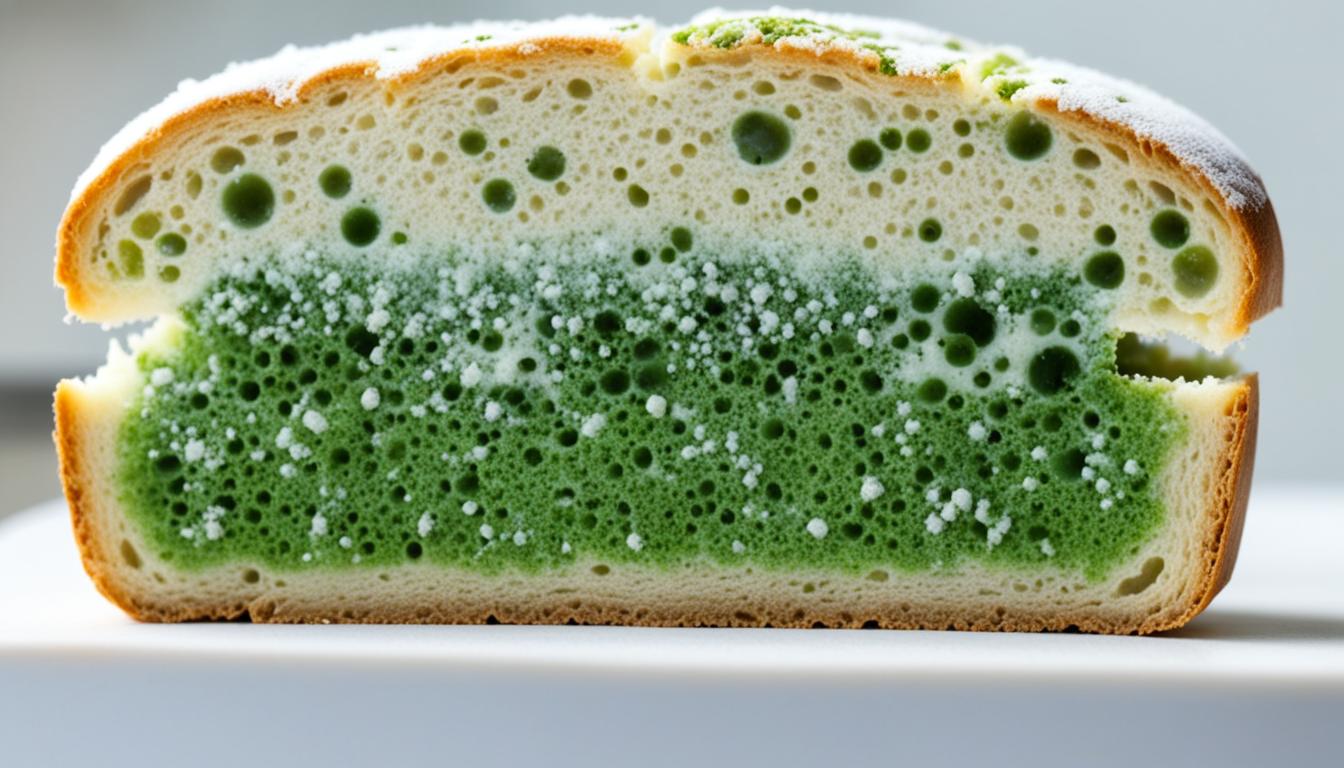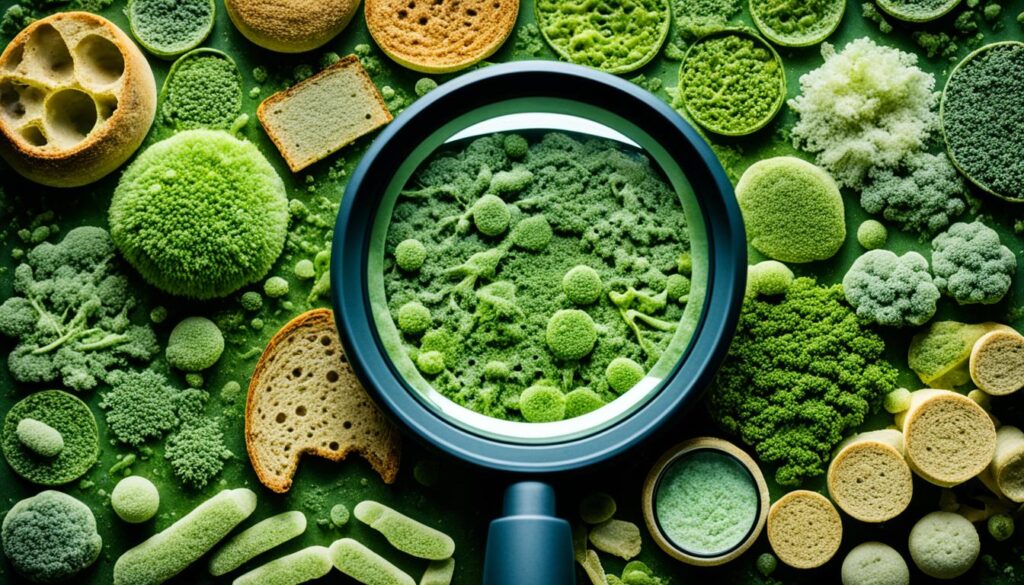
Is It Safe to Eat Mold on Bread? Risks & Facts
Have you ever found mold on bread and wondered if it’s safe to eat? As a cautious consumer, it’s important to understand the risks associated with consuming moldy bread and make an informed decision about whether or not to indulge in that last slice. In this article, we will delve into the topic, exploring the potential hazards and providing you with factual information to help you navigate your choices.
Key Takeaways:
- Eating mold on bread can pose health risks.
- Mold can produce toxins that may cause various illnesses.
- It is best to avoid eating moldy bread to prevent potential health complications.
- Making molds safely for home and culinary use is essential to ensure your well-being.
- By understanding the risks and following proper guidelines, you can enjoy mold-free bread and create molds safely.
Understanding the Risks of Eating Mold on Bread
When it comes to moldy bread, it’s essential to be aware of the potential health risks associated with its consumption. Mold growth on bread occurs due to moisture and warm conditions, creating an ideal environment for fungal growth. While some molds are harmless, others can pose serious health hazards if ingested.
Mold toxicity is a significant concern when it comes to eating mold on bread. Certain species of mold produce mycotoxins, which are toxic substances that can have adverse effects on human health. Mycotoxin exposure can lead to mold-related illnesses, ranging from mild symptoms to severe health complications.
Health Risks of Eating Mold on Bread
Eating moldy bread can expose you to various health risks:
- Allergic reactions: Mold spores can trigger allergic reactions in individuals sensitive to mold. Symptoms may include sneezing, coughing, runny nose, itchy eyes, and skin rashes.
- Respiratory issues: Inhaling mold spores or consuming mycotoxins can lead to respiratory issues, such as coughing, wheezing, and difficulty breathing.
- Digestive problems: Consuming moldy bread can irritate the digestive system, causing symptoms like nausea, vomiting, stomach pain, and diarrhea.
- Headaches: Some individuals may experience headaches or migraines after consuming moldy bread, possibly due to mycotoxin exposure.
Mold-Related Illnesses
Certain individuals, such as those with weakened immune systems or underlying health conditions, may be more susceptible to developing mold-related illnesses. Long-term exposure to mycotoxins from moldy bread can increase the risk of various health problems:
- Invasive fungal infections: Individuals with compromised immune systems, such as those with HIV/AIDS or undergoing cancer treatment, are at a higher risk of developing invasive fungal infections.
- Allergic bronchopulmonary aspergillosis (ABPA): ABPA is a severe allergic reaction caused by the fungus Aspergillus. It can lead to lung damage if left untreated.
- Mycotoxicosis: Mycotoxicosis refers to poisoning caused by the ingestion of mycotoxins. Symptoms may include muscle pain, fatigue, headaches, and neurological issues.
It’s important to note that not all types of mold on bread produce mycotoxins, and visible mold growth should always be discarded. It’s better to err on the side of caution by avoiding consuming moldy bread altogether to minimize the risks to your health.

Staying informed about the potential health risks of eating mold on bread and taking necessary precautions is essential for your well-being. Now that we have explored the risks, let’s move on to Section 3, where we will discuss how to make molds safely for home and culinary use.
How to Make a Mold Safely for Home and Culinary Use
In this section, we will guide you through the process of making molds safely for both home and culinary use. Whether you’re a craft enthusiast or a culinary artist, creating your own molds can be a rewarding and cost-effective alternative to purchasing pre-made molds. With our step-by-step instructions and guidelines, you can ensure that the molds you create are safe for use and meet your specific needs.
When it comes to making a mold safely, there are a few key considerations to keep in mind:
- Choose the right materials: Opt for materials that are food-safe and suitable for your intended purpose. For culinary molds, food-grade silicone is often the preferred choice due to its flexibility, durability, and non-stick properties. For crafts, you may consider using materials like food-grade silicone putty or alginate.
- Follow proper safety precautions: Before you begin, ensure that you are working in a well-ventilated area and wearing any necessary protective gear, such as gloves or goggles. This will help minimize the risks associated with handling certain materials, such as liquid silicone or plaster.
- Prepare your mold-making surface: Cover your work surface with a barrier like plastic wrap or parchment paper to prevent your mold from sticking to the surface. This will make it easier to remove the mold once it has set.
- Mix your mold-making material: Follow the manufacturer’s instructions for mixing your mold-making material. Pay attention to the recommended mixing ratios and the working time before the material sets. This will ensure that your mold cures properly and retains its shape.
- Pour and set: Once your mold-making material is thoroughly mixed, carefully pour it onto your desired object or shape. Use a gentle shaking or tapping motion to eliminate any air bubbles that may have formed. Allow the mold to set according to the manufacturer’s recommended curing time.
- Demold and clean: After the mold has fully cured, gently remove it from the object or shape. If needed, use a release agent like cooking spray or a mold release spray to facilitate the demolding process. Clean the mold with warm water and mild soap to remove any residue before using it.
By following these guidelines, you can make molds safely and confidently for a variety of purposes, from creating intricate culinary designs to crafting unique DIY projects. So let your creativity soar and enjoy the satisfaction of using molds that you made yourself!

Conclusion
In conclusion, the decision to eat mold on bread carries potential risks to your health. As discussed in earlier sections, consuming moldy bread can lead to mold toxicity and various mold-related illnesses. Therefore, it is generally recommended to avoid eating bread with visible mold.
However, it is important to note that not all molds are harmful, as some molds are used in the culinary industry and can be safe for consumption. The key is to make molds safely for home and culinary use. By following proper guidelines and using the right techniques, you can create molds that are free from harmful contaminants.
To summarize, the risks of eating mold on bread outweigh the potential benefits. It is best to discard moldy bread and opt for fresh, mold-free alternatives. If you do decide to experiment with molds for culinary purposes, ensure that you take necessary precautions to create molds safely and avoid any dangers associated with mold consumption. Mold safety should always be a priority to ensure a safe and enjoyable eating experience.




